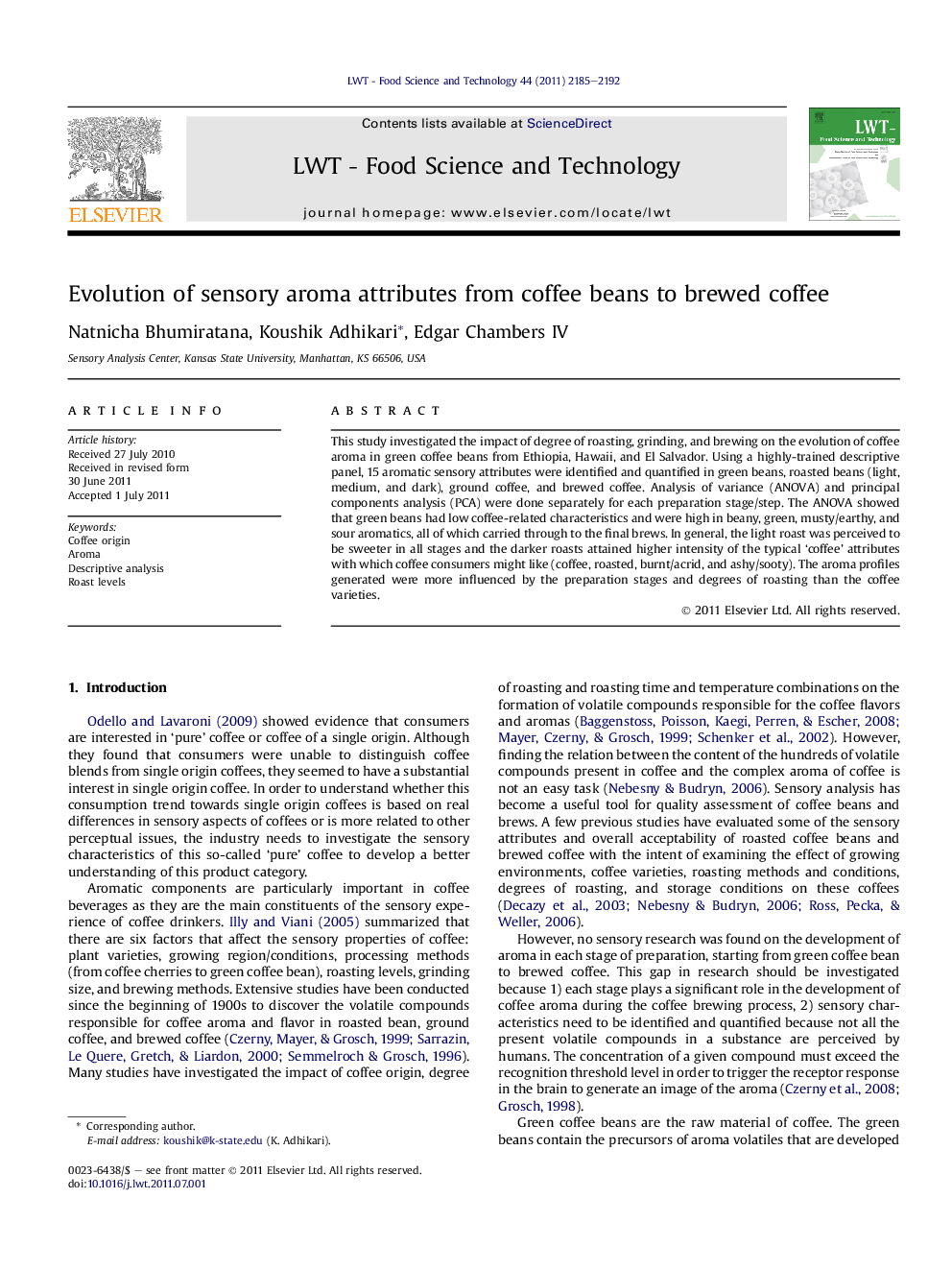| Article ID | Journal | Published Year | Pages | File Type |
|---|---|---|---|---|
| 6405875 | LWT - Food Science and Technology | 2011 | 8 Pages |
This study investigated the impact of degree of roasting, grinding, and brewing on the evolution of coffee aroma in green coffee beans from Ethiopia, Hawaii, and El Salvador. Using a highly-trained descriptive panel, 15 aromatic sensory attributes were identified and quantified in green beans, roasted beans (light, medium, and dark), ground coffee, and brewed coffee. Analysis of variance (ANOVA) and principal components analysis (PCA) were done separately for each preparation stage/step. The ANOVA showed that green beans had low coffee-related characteristics and were high in beany, green, musty/earthy, and sour aromatics, all of which carried through to the final brews. In general, the light roast was perceived to be sweeter in all stages and the darker roasts attained higher intensity of the typical 'coffee' attributes with which coffee consumers might like (coffee, roasted, burnt/acrid, and ashy/sooty). The aroma profiles generated were more influenced by the preparation stages and degrees of roasting than the coffee varieties.
âºAroma is one of the major factors in purchase decision for coffee drinkers. âºImpact of roasting, grinding, and brewing was studied on evolution of coffee aroma. âºPreparation stages and degrees of roasting influences coffee aroma the most. âºOrigin of the coffee varieties impacts aroma notes generated during roasting.
